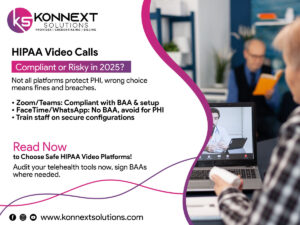Many podiatrists don’t realize how much money they lose just by missing or misusing modifiers like Q7, Q8, and Q9. These aren’t optional extras, for certain Medicare foot care claims, they’re essential. If your claims don’t meet strict criteria, they’ll be denied. If you document correctly and use these modifiers properly, you stand to protect and recover, thousands of dollars in payments.
Here’s what every podiatry practice needs to know, based on the latest Medicare policies and Local Coverage Determinations (LCDs).
What Medicare Requires: Q Modifiers & Routine Foot Care
- Routine foot care (trimming nails, removing calluses or corns, etc.) is generally not covered by Medicare, unless certain “systemic condition + clinical findings” criteria are met. Centers for Medicare & Medicaid Services+2Centers for Medicare & Medicaid Services+2
- When those criteria are met, one of the modifiers Q7, Q8, Q9 must be appended to the claim if it involves certain CPT/HCPCS codes. Centers for Medicare & Medicaid Services+1
- The CPT/HCPCS codes typically include: 11055, 11056, 11057, 11719, G0127, 11720, 11721 when the service is based on a qualifying systemic condition. Centers for Medicare & Medicaid Services+2Molina Healthcare+2
What Each Modifier Means
Based on current CMS / LCD guidance:
- Q7 = At least one Class A finding (e.g. non-traumatic amputation of foot or integral skeletal part of foot) in the same foot. Centers for Medicare & Medicaid Services+1
- Q8 = At least two Class B findings (e.g. absent dorsalis pedis pulse, absent posterior tibial pulse, or advanced trophic changes) in the same foot. Centers for Medicare & Medicaid Services+2Molina Healthcare+2
- Q9 = One Class B finding plus two Class C findings in the same foot (where Class C includes symptoms like claudication, temperature changes like cold feet, edema, etc.). Centers for Medicare & Medicaid Services+2Centers for Medicare & Medicaid Services+2
Key Documentation Steps to Avoid Denials
To make sure claims with these modifiers go through:
- Always document which foot (left / right) the findings apply to — do not mix findings from both feet for one modifier. Centers for Medicare & Medicaid Services+2Centers for Medicare & Medicaid Services+2
- For “advanced trophic changes” (a Class B finding), document three specific signs (e.g., thin shiny skin, nail thickening, persistent rubor). Generic phrasing often leads to denials. Centers for Medicare & Medicaid Services+1
- If using a diagnosis code marked with an asterisk in the LCD group (a code that requires active care by an M.D. or D.O.), include the name, NPI, and date of last visit with that physician. Centers for Medicare & Medicaid Services+1
- Append a foot/toe modifier (LT, RT, TA-T9) to indicate anatomical location. This is required for many MACs when billing those CPT/HCPCS codes with Q modifiers.
Frequency & Coverage Limits
- Services that qualify under routine foot care + Q modifiers are often limited to once every 60 days under many Medicare policies. Centers for Medicare & Medicaid Services+2Centers for Medicare & Medicaid Services+2
- For some diagnosis codes, there’s an “active care” requirement: you must show the patient has been seen by an M.D. or D.O. managing the systemic disease within the past 6 months. Centers for Medicare & Medicaid Services+1
Common Denial Mistakes & How to Fix Them
| Mistake | Why it Causes Denial | How to Prevent |
| No Q modifier on a claim when systemic condition + class findings exist | Medicare sees claim as routine foot care, which is non-covered under most LCDs | Audit documentation; use appropriate Q7/Q8/Q9 based on findings |
| Mixing findings from both feet to justify a modifier | Modifier must reflect findings in the same foot | Use clear laterality; document signs per foot |
| Trophic changes documented without three specific signs | Generic statements don’t meet criteria | Use precise descriptions: skin, nails, color changes etc. |
| Missing active care documentation when required | Claims rejected for missing physician involvement | Include MD/DO name, date of last visit |
| Omitting foot/toe modifiers | Payers can deny for missing location detail | Always include LT/RT or toe-specific modifier |
What Your Practice Should Do Now
- Review recent denied foot care claims, especially those you think should have been covered — check if Q modifiers or documentation issues were the cause.
- Update provider documentation templates to ensure class findings, laterality, active care, and system condition diagnoses are clearly captured.
- Train your billing/coding team on the latest LCDs in your MAC region — rules for Q modifiers change periodically.
- Use claim scrubbing tools or checklists that flag missing Q modifiers or incomplete documentation before submission.




